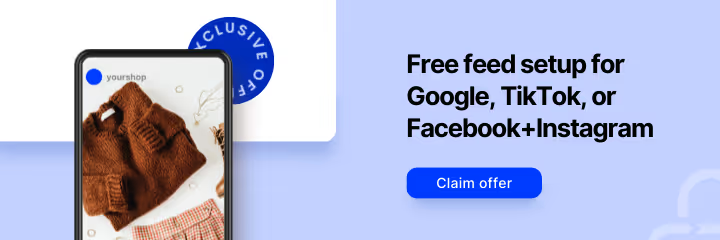Selling on Amazon is a learning process. Success on the platform requires some trial and error.
No matter how hard you try at the beginning, you’ll need to make adjustments as you discover what works and what doesn’t for your company.
It’s common for sellers to experiment with pricing, imagery, copy, and many other elements. However, there’s one component of selling on Amazon that you absolutely cannot risk with an experimental approach: Fulfillment.
Make mistakes where fulfillment is involved, and your account may never recover.
Specifically, there are four mistakes you have to avoid at all costs. These mistakes cause problems that are time-consuming and costly to fix. To better set yourself up for long-term success, take a moment to learn what they are.
1. Not tracking your inventory levels
If you’re out of inventory at a brick-and-mortar store, the worst-case-scenario is having to deal with a disappointed customer. It’s not ideal, but it’s also not the end-of-the-world.
For sellers on Amazon, running out of inventory can feel very much like the apocalypse.
The first consequence is simply missed business.
It generally takes a lot of work–often a lot of money, as well–to improve a product’s rankings to the point where qualified customers are constantly seeing it. All of that hard work won’t amount to anything if you don’t have any inventory to actually sell those excited shoppers.
What’s worse is that Amazon won't be pleased upon realizing that you’re unable to reliably fulfill orders. The same applies to fulfilling orders late. So, if you keep taking orders even though you’re out of inventory because you know that will change in a day or two, expect Amazon to penalize your account.
This is especially true when you first start your account. One of the biggest mistakes you can make is to be late with your fulfillment in the beginning. If your first 10 orders aren’t flawless, you need to seriously consider making some major changes.
Pay attention to your Inventory Performance Index in Seller Central, too. Amazon goes to great lengths to help their sellers, and you can bet those who listen enjoy better rankings.
2. Ignoring signs it’s time to switch to FBA
You have two options for fulfillment when you sell on Amazon:
- Fulfillment by Merchant (FBM) - when you handle the fulfillment, even if it means outsourcing the responsibility to a third party.
- Fulfillment by Amazon (FBA) - when you send your products to one of Amazon’s warehouses and they take care of fulfilling your orders.
Depending on your company, FBM may seem like the obvious choice. It definitely gives you more control over your entire supply chain. You may already have fulfillment processes in place for other products, as well.
Plenty of companies have been successful with FBM, but it’s not for everyone, so stay open to the idea of switching to FBA. If you’re struggling to fulfill orders on time, it’s probably a good idea to rely on Amazon's fulfillment capabilities.
The goal for fulfillment should always be 100% success. At the very least, keep your late shipment rates below 4% and pre-fulfillment cancellations to below 2.5%.
Furthermore, as Amazon is understandably confident in their FBA accounts, you can expect greater scrutiny if you choose FBM. So, tackle problems the moment they arise.
3. Including marketing materials with your products
Given how hard you work to create the absolute best products and then get them in front of shoppers despite all of the other competitors out there, who could blame you for including some marketing materials in your packaging?
Amazon, that’s who.

Even if you decide to handle fulfillment on your own, Amazon has a zero-tolerance policy for including any marketing materials for your company or its other products, even if they might be relevant to the buyer.
All it would take is one customer letting Amazon know you put a flyer in their package to incur a penalty. Keep in mind, too, that some of your competitors may order your products (e.g. for research) and would probably love letting Amazon know that you haven’t been following the rules.
To be clear, “inserts” are allowed. Here are the dos and don’ts of using them:
- It's okay to:
- Remind buyers of the benefits of your products to avoid buyer’s remorse and returns
- Inquire about satisfaction
- Offer support
- It’s not okay to:
- Provide a discount code
- Request a review
- Ask for specific forms of feedback (e.g. a five-star review)
- Mention reviews and discounts in the same message
- Direct customers to your company’s website or any other besides Amazon
In short, if your insert provides the customer with actual value, great. If it is an overt attempt to help your account, skip it.
4. Trying to fulfill excessive orders manually
As you can probably tell by now, properly tracking and managing fulfillments is essential to success on Amazon. If you neglect to do so, it’s only a matter of time before you miss red flags that something is wrong with your system.
This is true even if you decide to outsource fulfillment to Amazon (FBA). The moment you release possession of your product, you need to monitor its journey to the warehouse.
Of course, the same thing can happen with orders leaving the warehouse. Just because it was sent to a customer doesn’t mean they’ll receive it. When that happens once in a while, it might be considered the price of doing business. When that happens on a regular basis, it’s going to take a heavy toll on your business.
Once your inventory reaches a certain level, it’s impossible to effectively track if your customers’ orders are being fulfilled on time. That’s why automated order management systems like ours have become so popular. Companies don’t have to pay a full-time salary (or multiple salaries) to make sure their orders are being fulfilled. An order management system can save time, money, insure accuracy, and simplify processes.
There comes a point with any ecommerce business where protocol needs to be reconsidered. Don't hesitate to do what's best for your business as soon as old standards don't quite make the cut.
Final Thoughts
Fulfillment is among the most important aspects of success on Amazon.
Far too often, those who are new to selling on Amazon look at fulfillment as an afterthought–like it’s necessary but not necessarily important. However, any veteran seller who’s found success will tell you that if your fulfillment suffers, the rest of your operation will, too.
Avoid the mistakes above and optimize your fulfillment strategy, and you won't have to worry about any penalizing surprises from Amazon.






%20).webp)